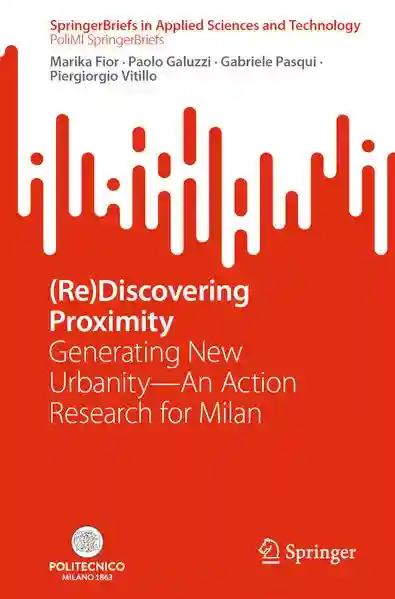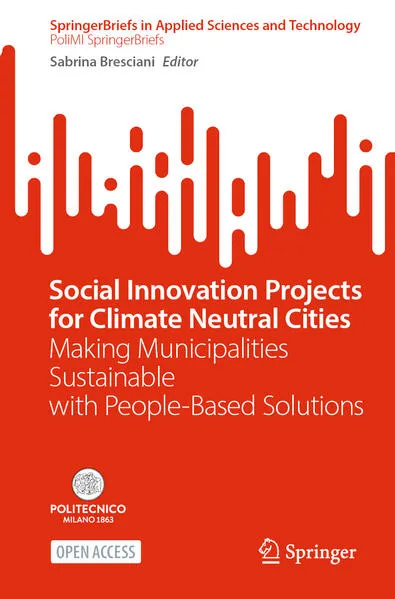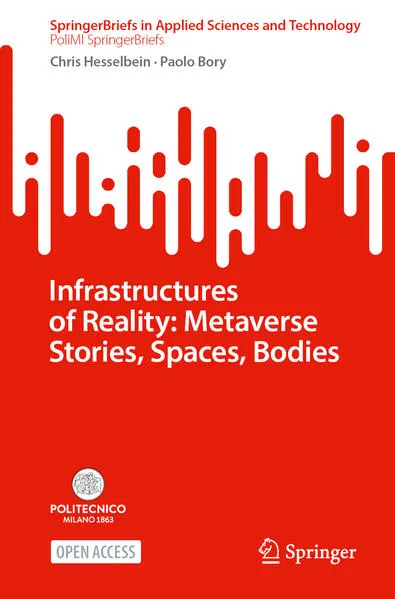Chronologie aller Bände (1 - 2)

Die Reihenfolge beginnt mit dem eBook "Social Innovation Projects for Climate Neutral Cities". Wer alle eBookz der Reihe nach lesen möchte, sollte mit diesem Band von Sabrina Bresciani beginnen. Der zweite Teil der Reihe "Infrastructures of Reality: Metaverse Stories, Spaces, Bodies" ist am 02.09.2025 erschienen. Die Reihe umfasst derzeit 2 Bände. Der neueste Band trägt den Titel "Infrastructures of Reality: Metaverse Stories, Spaces, Bodies".
- Anzahl der Bewertungen für die gesamte Reihe: 0
- Ø Bewertung der Reihe: 0
Diese Reihenfolge enthält 2 unterschiedliche Autoren.
- Autor: Bresciani, Sabrina
- Anzahl Bewertungen: 0
- Ø Bewertung:
- Medium: E-Book
- Veröffentlicht: 21.04.2025
- Genre: Sonstiges
Social Innovation Projects for Climate Neutral Cities
This open access book examines the role of social innovation in cities as an important lever towards climate neutrality. Social innovations are people-centred collaborative solutions, activating the urban ecosystem for change and providing platforms for citizens, civic organizations, the private sector, and governmental institutions to collaborate towards the goal of reducing greenhouse gas (GHG) emissions. The book, based on work developed within the EU-funded project NetZeroCities, which aims to support over 100 European cities to be climate-neutral by 2030, outlines methods, cases, and pathways of social innovation in Europe. It presents social innovation design process pathways through methods, categories of actions, and related cases for developing and scaling social innovations at the urban level, contributing to a systemic approach to tackle the grand challenge of reaching net zero. Within these pages, researchers and policymakers can find examples of cities that have deployed innovative public administration practices by systemically embedding social innovation in varied fields of urban action plans, including energy, citizen engagement, and behavioural change for lowering carbon emissions and increasing well-being.
- Autor: Hesselbein, Chris
- Anzahl Bewertungen: 0
- Ø Bewertung:
- Medium: Digital
- Veröffentlicht: 02.09.2025
- Genre: Sonstiges
Infrastructures of Reality: Metaverse Stories, Spaces, Bodies
This open access book focuses on two dimensions of the development of the metaverse that are crucial to ‘reality’, namely spatiality and embodiment. Metaversal technologies are thought to fundamentally affect both our spaces and bodies, which are two central aspects of the constitution of social reality. Both spatiality and embodiment are core elements of world-making that are being pulled into the ambit of metaversal projects. On the one hand, metaversal technologies are profoundly spatial in the sense that they render space in virtual form or overlay digital layers onto pre-existing physical spaces. On the other hand, metaversal technologies are directly geared towards the body in that they not only seek to extend or expand our embodied senses and emplace our bodies in virtual spaces, but they also seek to capture their behaviours and actions on a far more granular level. This can create new opportunities in terms of work, social interaction, and leisure, but can also open our bodies up to new, tech-driven interventions and control. Whether in the form of VR or AR, such technologies not only reproduce space but also rely on making spaces more legible and open to automated interventions. Taken together, the ‘metaversification’ of spaces and bodies gives rise to crucial questions about the goals and implications of metaversal developments by large technology companies and about the relationship between the developments of the metaverse and AI systems. Drawing on our combined background and expertise in Science and Technology Studies and the History of Media and Communication, we critically analyse the development of metaversal technologies and platforms by discussing a broad set of developments and examples from a wide range of technology and gaming companies. Written in clear, concise, and accessible language, and combining and applying novel theoretical frameworks and concepts to a currently emergent phenomenon, this book will find a large audience not only within academic and professional circles but also in popular culture.

